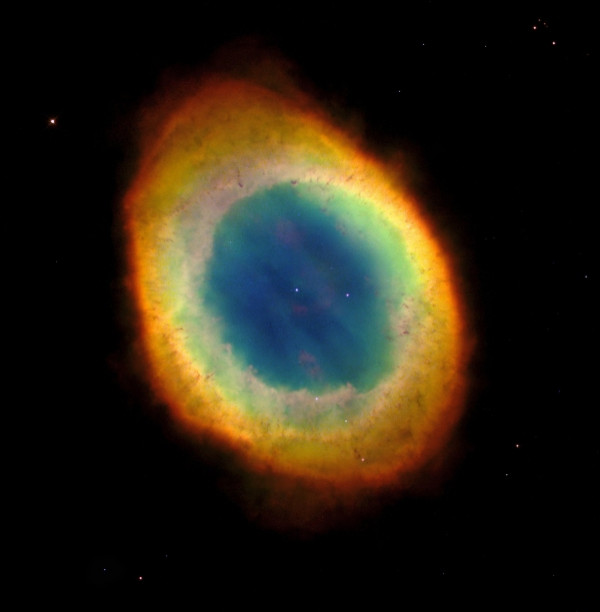Ring Nebula’s True Shape Revealed By NASA's Hubble Space Telescope; It’s Like A ‘Jelly Doughnut’ [PHOTOS]
Using NASA’s Hubble Space Telescope, scientists have managed to get some new information about the shape of the Ring Nebula -- a glowing cloud of gas that shrouds an old, dying, sun-like star.
A team of researchers, headed by C. Robert O'Dell of Vanderbilt University used the Hubble and many ground-based telescopes to get a better view of the Ring Nebula to reveal that the iconic nebula has a more complex structure than was previously known.
"The nebula is not like a bagel, but rather, it's like a jelly doughnut, because it's filled with material in the middle," O'Dell was quoted as saying, in a NASA release. "With Hubble's detail, we see a completely different shape than what's been thought about historically for this classic nebula. The new Hubble observations show the nebula in much clearer detail, and we see things are not as simple as we previously thought."
Earlier observations detected some gaseous material in the ring's central region. However, Hubble’s new images have led researchers to suggest that the ring wraps around a blue, football-shaped structure, while each end of the structure protrudes out of opposite sides of the ring. Check out the composite image of the Ring Nebula released by NASA below:

In the Hubble image, the blue structure is the glow of helium. Radiation from the white dwarf star, the white dot in the center of the ring, is exciting the helium to glow. The white dwarf is the stellar remnant of a sun-like star that has exhausted its hydrogen fuel and has shed its outer layers of gas to gravitationally collapse to a compact object.
According to researchers, the irregular knots of dense gas embedded along the inner rim of the ring were ejected by the central star about 4,000 years ago.

In its initial stages, the star was several times bigger than the sun. However, after billions of years converting hydrogen to helium in its core, the star began to run out of fuel. Eventually, its size increased and it became a red giant. During this stage, the star shed its outer gaseous layers into space and began to collapse as fusion reactions began to die out. A stream of ultraviolet light from the dying star energized the gas, which helped it glow.
Scientists said that the nebula is expanding at more than 43,000 miles an hour, while the center is moving faster than the expansion of the main ring. The nebula will continue to expand for another 10,000 years, becoming fainter and fainter until it merges with the interstellar medium.
The Ring Nebula, located in the northern constellation of Lyra, is about 2,000 light years away from Earth and measures approximately one light year across.
© Copyright IBTimes 2025. All rights reserved.





















